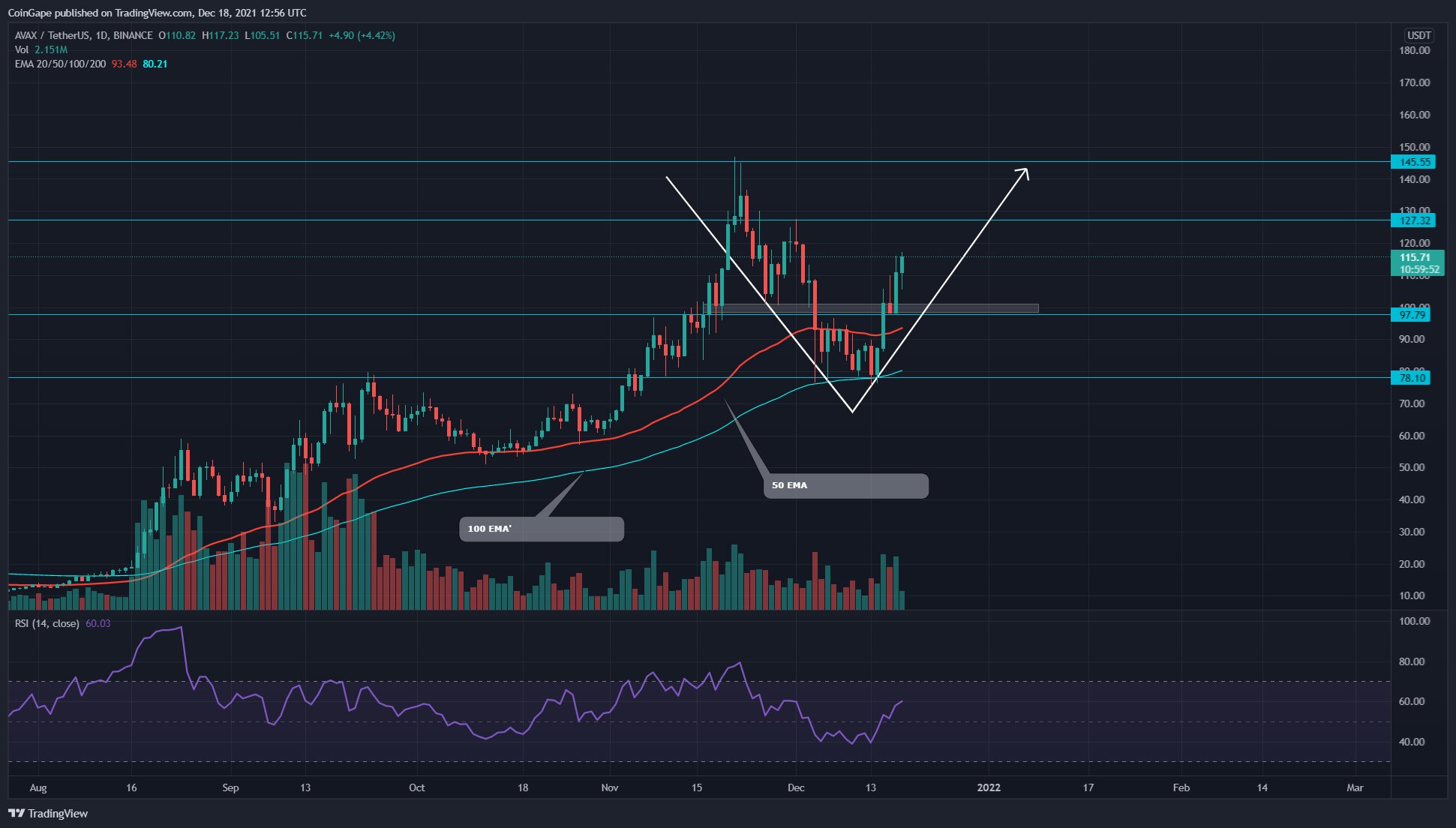Introduction
Crypto and blockchain are two terms that have gained significant attention in recent years. They are often used interchangeably, leading to confusion about their meanings and how they relate to each other. Understanding the difference between crypto and blockchain is essential for anyone interested in the world of digital currencies and decentralized systems.
Crypto, short for cryptocurrency, refers to a digital or virtual form of currency that uses cryptography for secure and anonymous transactions. It is a medium of exchange that operates independently of a central bank and is based on blockchain technology.
Blockchain, on the other hand, is a decentralized and transparent digital ledger that records all transactions across multiple computers. It is the underlying technology that powers cryptocurrencies like Bitcoin and Ethereum.
While both crypto and blockchain are closely related, they have distinct characteristics and functions that set them apart. In this article, we will delve deeper into the definitions of crypto and blockchain and highlight their key differences. By the end, you will have a clear understanding of these terms and how they contribute to the evolving landscape of digital finance.
Definition of Crypto
Crypto, short for cryptocurrency, is a form of digital or virtual currency that is secured by cryptography. It operates on a decentralized network known as a blockchain, which ensures the security and integrity of transactions.
Cryptocurrencies are not issued or regulated by a central authority, such as a government or a financial institution. Instead, they rely on cryptographic techniques to control the creation of new units and verify the transfer of funds. This decentralized nature makes cryptocurrencies resistant to censorship and manipulation.
One of the fundamental features of crypto is its ability to provide secure and anonymous transactions. Cryptography, the science of encoding and decoding information, is used to protect the identities of users and ensure the confidentiality of financial transactions. This allows individuals to conduct transactions privately and securely, without the need for intermediaries.
Another important aspect of crypto is its limited supply. Most cryptocurrencies have a predetermined maximum supply, which means that new units cannot be created arbitrarily. This scarcity gives cryptocurrencies value and makes them an attractive investment option.
Bitcoin was the first cryptocurrency to gain widespread attention, and it remains the most well-known and valuable one. However, there are now thousands of different cryptocurrencies available, each with its own unique attributes and use cases.
Overall, crypto provides a digital form of money that is secure, decentralized, and offers the possibility of greater financial privacy. Its disruptive nature has the potential to revolutionize traditional financial systems and introduce new possibilities in areas such as global remittances, digital asset ownership, and decentralized applications.
Definition of Blockchain
Blockchain is a decentralized and transparent digital ledger that records all transactions across multiple computers in a network. It serves as the underlying technology for cryptocurrencies and enables secure and immutable record-keeping.
At its core, a blockchain is a series of interconnected blocks that contain digital information. Each block contains a unique identifier called a hash, a timestamp, and a reference to the previous block. This chain-like structure ensures the integrity and immutability of the data.
Unlike traditional databases that are centralized and controlled by a single authority, a blockchain is distributed across multiple nodes or computers. These nodes collectively validate and record new transactions, creating a decentralized network that is resistant to tampering.
Transparency is a defining characteristic of blockchain technology. Once a transaction is recorded on the blockchain, it becomes visible to all participants in the network. This transparency fosters trust and accountability, as anyone can verify the authenticity of transactions and the ownership of assets.
Furthermore, the decentralized nature of blockchain eliminates the need for intermediaries and can potentially reduce costs and increase efficiency in various industries. It has the potential to streamline processes such as supply chain management, healthcare records, voting systems, and many more.
Security is another key feature of blockchain technology. As each transaction is verified and added to the blockchain through consensus mechanisms, such as proof-of-work or proof-of-stake, it becomes extremely difficult to modify or manipulate the data. This makes blockchain highly secure against fraud and hacking.
Overall, blockchain technology has the potential to revolutionize not only the financial sector but also various other industries by introducing transparency, security, and decentralization. It provides a trustless and tamper-resistant platform for conducting transactions and building decentralized applications, paving the way for a more efficient and equitable digital future.
Characteristics of Crypto
Cryptocurrencies possess several distinct characteristics that set them apart from traditional forms of currency. Understanding these features is crucial for grasping the unique value proposition of crypto:
- Decentralization: Cryptocurrencies are decentralized, meaning they operate on a network of computers distributed across the globe. This eliminates the need for a central authority, such as a government or a bank, to control or regulate transactions.
- Security: Cryptocurrencies use cryptographic techniques to ensure the security and privacy of transactions. The complex algorithms involved make it nearly impossible to hack or manipulate the digital currency.
- Anonymity: While not all cryptocurrencies offer complete anonymity, many provide a level of privacy by masking the identities of users involved in transactions. This feature appeals to individuals who value financial privacy.
- Global Accessibility: Cryptocurrencies can be accessed by anyone with an internet connection, regardless of their location or status. This makes them particularly useful for individuals in underserved regions or those without access to traditional banking services.
- Borderless Transactions: Cryptocurrencies facilitate seamless and near-instantaneous peer-to-peer transactions across borders. This eliminates the need for intermediaries or costly remittance services, making cross-border payments faster and more affordable.
- Scarcity: Most cryptocurrencies have a limited supply cap, which means that there is a finite amount that can ever be created. This scarcity creates a sense of value and can potentially make cryptocurrencies a store of value, similar to precious metals like gold.
- Volatility: Cryptocurrencies are known for their price volatility. Their value can fluctuate rapidly due to various factors, including market demand, regulatory changes, and investor sentiment. This volatility presents both opportunities and risks for traders and investors.
- Technological Innovation: Cryptocurrencies and blockchain technology are at the forefront of technological innovation. Their development has led to advancements in fields such as cryptography, distributed systems, and consensus algorithms.
These characteristics collectively contribute to the unique appeal of cryptocurrencies. They offer individuals and businesses new financial opportunities, while also challenging traditional financial systems by providing alternative ways of transacting, investing, and storing value.
Characteristics of Blockchain
Blockchain technology possesses several distinct characteristics that make it a revolutionary innovation in the realm of digital transactions and data management:
- Decentralization: Blockchain operates on a decentralized network of computers, referred to as nodes. This eliminates the need for a central authority to manage and validate transactions, making the system more resistant to censorship and single points of failure.
- Transparency: The transparent nature of blockchain enables anyone to view the entire transaction history, fostering trust and accountability. This transparency also reduces the potential for fraud and corruption, as the transactions are publicly recorded and verifiable.
- Immutable Record-Keeping: Once a transaction is added to the blockchain, it becomes virtually impossible to alter or delete it without the consensus of the network. This immutability ensures the integrity of data and makes blockchain suitable for applications that require tamper-proof record-keeping.
- Security: Blockchain uses cryptographic algorithms to secure transactions and protect data from unauthorized access. The decentralized nature of the network and the consensus mechanisms employed make it highly resistant to hacking and fraud.
- Efficiency: Blockchain eliminates the need for intermediaries in many processes, reducing costs, and improving efficiency. By automating and streamlining operations, blockchain has the potential to revolutionize industries such as supply chain management, finance, healthcare, and more.
- Smart Contracts: Blockchain can support the execution of smart contracts, which are self-executing agreements with predefined conditions. These contracts enforce the terms of an agreement without the need for intermediaries, providing increased security and efficiency.
- Collaboration and Governance: Blockchain networks are governed by consensus among the participating nodes. This collaborative approach allows for decentralized decision-making and empowers participants to have a say in the development and evolution of the blockchain ecosystem.
- Interoperability: Blockchain has the potential to enable data and value exchange across different platforms and systems. Interoperability would simplify complex processes and facilitate seamless integration between different blockchain networks.
These characteristics make blockchain technology a disruptive force with tremendous potential to revolutionize various industries. By providing transparency, security, and decentralized control, blockchain offers new opportunities for innovation, efficiency, and trust in the digital age.
Key Differences Between Crypto and Blockchain
While crypto and blockchain are closely related, they have distinct differences in terms of their definitions, functionalities, and characteristics. Let’s explore the key differences between the two:
- Definition: Crypto refers to digital or virtual currencies that use cryptography for secure transactions, while blockchain is a decentralized and transparent digital ledger that records transactions across multiple computers.
- Functionality: Crypto serves as a medium of exchange and store of value, enabling secure and private transactions. Blockchain, as the underlying technology, provides a platform for recording and verifying these transactions.
- Scope: Crypto represents the various cryptocurrencies available in the market, such as Bitcoin, Ethereum, and Litecoin. Blockchain, on the other hand, extends beyond cryptocurrencies and can be used for a wide range of applications, including supply chain management, voting systems, and decentralized applications.
- Centralization: Cryptocurrencies are decentralized, meaning they operate without the control of a central authority, while blockchain technology itself can be either decentralized or centralized, depending on the specific implementation.
- Anonymity: Cryptocurrencies offer varying degrees of anonymity, allowing users to protect their identities during transactions. Blockchain, however, provides transparency as every transaction recorded on the blockchain is visible to all participants.
- Security: Crypto ensures transaction security through encryption techniques and decentralized networks. Blockchain enhances security by using cryptographic algorithms and consensus mechanisms to verify and validate transactions.
- Value: Cryptocurrencies have market value and can be traded or used as a form of payment. Blockchain, being a technology, does not have inherent value but provides the infrastructure for cryptocurrencies and other applications.
- Expansiveness: Crypto is constantly evolving, with new cryptocurrencies being created and existing ones modified or replaced. Blockchain, while also evolving, remains a foundational technology that can support different types of cryptocurrencies and applications.
These differences illustrate the symbiotic relationship between crypto and blockchain. Crypto relies on blockchain technology for secure transactions, while blockchain provides the infrastructure and framework for cryptocurrencies to operate.
Understanding the distinctions between crypto and blockchain is crucial for navigating the world of digital currencies and decentralized systems effectively.
Conclusion
In summary, crypto and blockchain are two interrelated but distinct concepts in the digital realm. Crypto refers to digital currencies that utilize cryptography for secure and private transactions, while blockchain is the underlying technology that provides a decentralized and transparent ledger for recording those transactions.
Cryptocurrencies have revolutionized the way we think about money and value exchange, offering decentralization, security, and potential for financial privacy. They have created a new frontier of digital assets and investment opportunities.
Blockchain, on the other hand, is a disruptive technology with applications far beyond cryptocurrencies. Its decentralized and transparent nature brings trust, efficiency, and accountability to various industries, ranging from supply chain management to healthcare.
While crypto and blockchain are distinct, they are intrinsically linked. Crypto relies on blockchain technology for secure and trustworthy transactions, and blockchain provides the infrastructure and framework for cryptocurrencies to function.
Understanding the differences between crypto and blockchain is crucial for individuals and businesses looking to embrace the possibilities presented by these innovations. It allows them to make informed decisions, explore new opportunities, and navigate the evolving landscape of digital finance.
As crypto and blockchain continue to evolve and shape the future, it is important to stay informed, embrace innovation, and explore the limitless potential they offer for creating a more secure, transparent, and decentralized digital world.

























